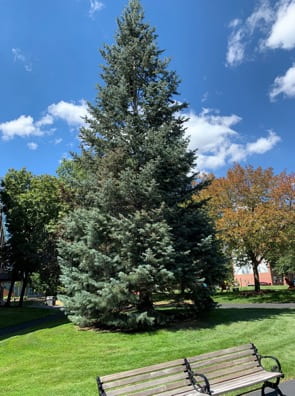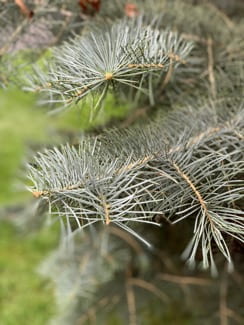| General Information |
| Scientific Name | Abies Concolor | ||
| Common Name | White Fir | ||
| Plant Type | Upright needled evergreen | ||
| Family | Pinaceae | ||
| Native Region | Western US and Mexico | ||
| Zone | 3-7 | ||
| Height | 40’-70’ | ||
| Bloom Time | Non-Flowering | ||
| Sun Requirement | Full Sun to Part Shade | ||
| Water Requirement | Moderate | ||
| Tolerates | Long winters and some soil dryness |
| Description |
White fir is an evergreen tree, featuring a narrow conical (cone shaped) form with soft and flat needles in a blue-green color. The trees are conifer (cone-bearing), producing 3”-6” cones that start yellow-green then brown with age. Trees typically grows 40’-70’ but can get up to 130’ in the wild.
Praised for its ornamental evergreen value for a “Christmas Tree” like appearance, white fir is most commonly used as a specimen (individual) tree in landscape design.
| History |
The Latin name Abies concolor comes from Pliny an Ancient Roman naturalist. The tree is native to the Pacific cost of the United States as well as Mexico and can withstand cold dry mountain slopes with longer winters is areas of rich well-draining soil, such as the Rocky Mountains.
| Campus Information |
Accession # 1-3
Abies Concolor, also known as White Fir, can be located at Ryder Hall, International Village Courtyard, and Curry Student Center (facing Robinson). The White Fir located at the International Village Courtyard is a grouping of three trees under the same accession.
 |
 |
